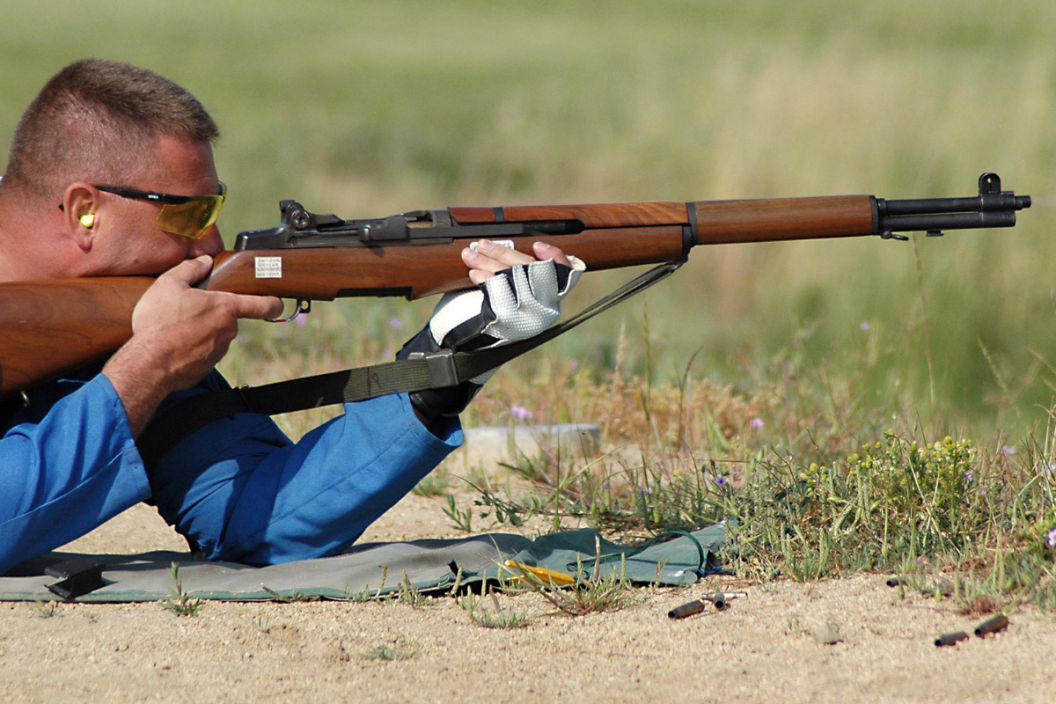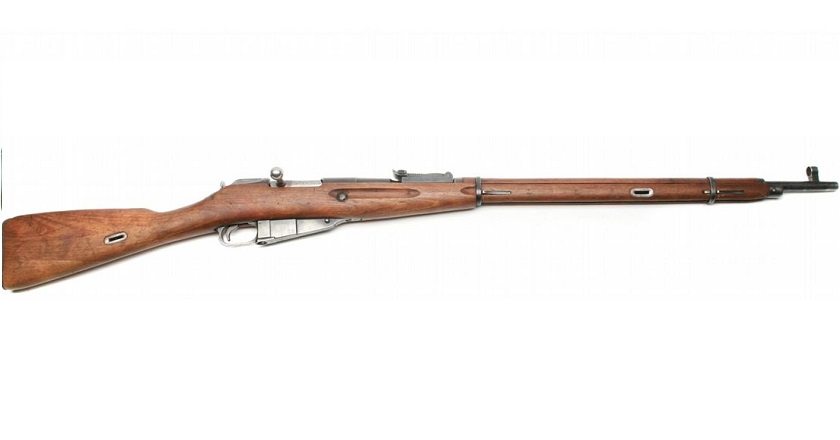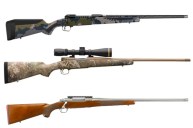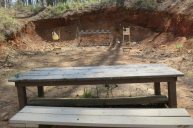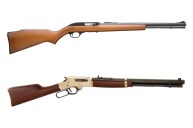Armies of various countries adopted these guns because they were rugged, easy to use, and well-built. Most of the military surplus guns on this list are over 50 years old (some individual guns may even be more than 100 years old). So they offer excellent opportunities to possess a piece of history. Because millions of these guns were produced, most are still widely available in the United States for a reasonable price from used gun shops and individuals who've acquired them over the years. While they used to be more affordable than they are, there are some excellent deals on this list.
Many firearms have also left their mark on the world by heavily influencing future designs for future generations. If you're a serious shooter who wants to own some history, continue reading to see the eight military surplus guns every shooter should own.
Mosin-Nagant
The Mosin-Nagant is perhaps the most reasonably priced military surplus gun on this list. These rifles go for $100-$250, depending on the individual model and its condition. Russian soldiers and communist forces used these rugged, inexpensive, easy-to-use rifles in dozens of third-world countries during the Cold War.
The Mosin-Nagant is chambered in the potent 7.62x54mmR round, renowned for its fierce recoil. The 7.62x54R cartridge is powerful enough to hunt most big game species short of buffalo. Additionally, soft- or hollow-point ammo is available in the United States, which makes this rifle a good choice for a hunter on a budget.
Lee Enfield
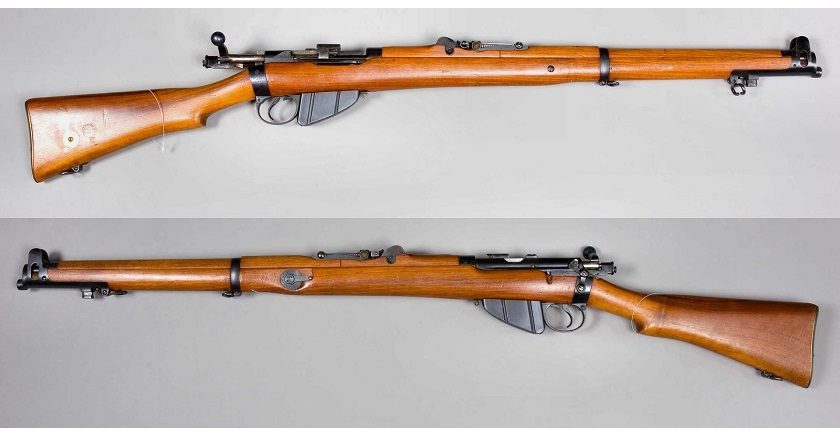
Wikimedia Commons: Armémuseum (Swedish Army Museum)
Usually retailing for more than $400 in the United States, the Lee-Enfield rifle is slightly more expensive than the Mosin-Nagant. However, it's a great military surplus rifle, and it's still a good buy. These rifles are ubiquitous in countries with a lot of British influence, like Canada, South Africa, and Australia.
The Lee-Enfield rifle, chambered in the excellent .303 British cartridge, is another good choice for a hunter on a budget. Many deer, bears, moose, and kudu have fallen to bullets from Lee-Enfield rifles over the years.
SKS

Wikimedia Commons: Armémuseum (Swedish Army Museum)
The SKS is the first semi-automatic rifle on this list of military surplus guns. And, along with the Mosin-Nagant and the Kalashnikov, it's another Russian contribution to conflicts worldwide. The SKS has also been produced (with varying quality) in China, Yugoslavia, Romania, Albania, East Germany, North Vietnam, North Korea, and, of course, the Soviet Union.
Comparable in power to the .30-30 Winchester, the 7.62x39mm cartridge is fantastic for short-to-moderate-range shots at many species of big game. Similar to the 7.62x54R cartridge, some manufacturers produce soft- and hollow-point 7.62x39mm ammunition for hunting. While it wouldn't be my first choice for a hunting rifle, hunters everywhere have successfully used the SKS for hunting a wide variety of game.
1898 Mauser
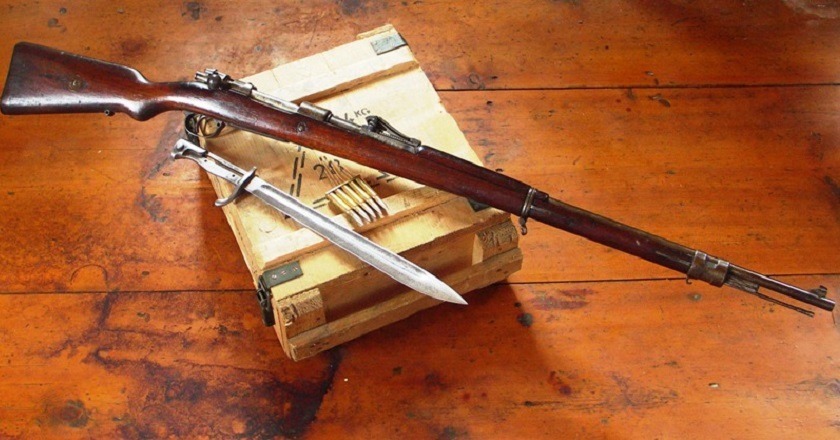
Wikimedia Commons: Bryan986
Upon its introduction, the Mauser 1898 revolutionized the firearms world and set the standard all bolt-action rifles are measured against. Many modern sporting bolt-action rifles incorporate a Mauser-style controlled feed system. The Germans used the Mauser 1898 and its subsequent variants (such as the Karabiner 98k) in World War I and II.
Most military-surplus Mauser rifles today are chambered in 7.92x57mm (8mm Mauser). This cartridge is excellent for medium-sized hunting game, such as deer, bear, and hogs. However, "sporterized" Mauser rifles chambered in a wide variety of calibers like 6mm Remington, .270 Winchester, .308 Winchester, .30-06 Springfield, and .35 Whelen have spread all over the world and turn up in gun collections in virtually every continent.
Mauser is still in business and produces a modernized version of the Mauser 1898 (the M98) that incorporates many features that made the Mauser 1898 such an iconic rifle. One of these rifles, chambered in .416 Rigby, knocked professional shooter and hunter Ron Spomer over on video.
1903 Springfield
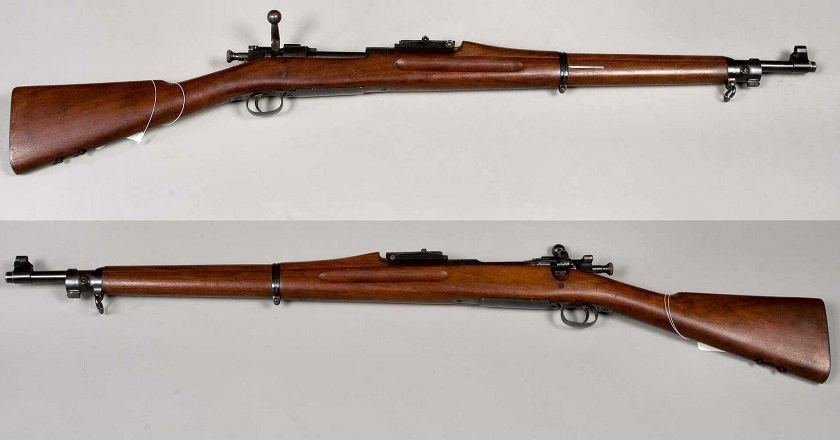
Wikimedia Commons: Armémuseum (The Swedish Army Museum)
American soldiers, armed with Krag-Jørgensen military rifles chambered in .30-40 Krag, received a sobering lesson during the Spanish-American War. The United States thought the Krag rifles' ease of use while reloading was advantageous. The Spaniards, equipped with Mauser rifles, were simply more effective. Mauser rifles shot farther and flatter. They penetrated harder with a more humane bullet and reloaded quicker.
As the New York Times wrote in 1898, "it seems to me we have an inferior gun."
As a result, the Army selected the 1903 Springfield (named after the Springfield Armory) to replace the Krag-Jørgensen. The new rifle incorporated many features that made the Mauser such a revolutionary rifle. The gun was so similar to the Mauser that Springfield had to pay royalties to Mauser for patent infringement.
However, like the Mauser, the 1903 Springfield was a very successful rifle. American Soldiers widely used it in World Wars I & II. Chambered in the ubiquitous .30-06 Springfield cartridge, the Springfield is a very accurate rifle with a competent shooter capable of hitting targets at long range.
For this reason, it was used by American snipers in WWII, Korea, and Vietnam.
These characteristics make the 1903 Springfield an excellent choice for hunters and shooters. Hunters using surplus 1903 Springfields have taken virtually every North American big game species. Unfortunately, the biggest problem with the 1903 Springfield is that it is probably the most expensive military surplus gun on this list, fetching prices over $800 in most cases.
M1 Garand
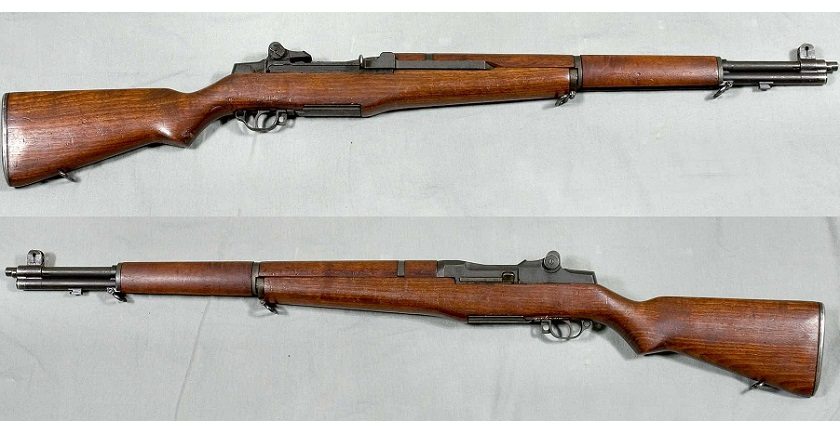
Wikimedia Commons: Armémuseum (The Swedish Army Museum)
George Patton called the M1 Garand "the greatest battle implement ever devised." He was right. The semi-automatic M1 Garand, with its eight-round "en-bloc" clip, was a quantum leap ahead of contemporary bolt action rifles. The M1 gave American Soldiers a significant advantage on the battlefield.
Chambered in .30-06 Springfield, the semi-auto rifle combined hard-hitting power with a tremendous rate of fire. Additionally, the M1 Garand is also a very accurate rifle. The gun has excellent sights and a great trigger, allowing a good shooter to shoot at ranges of several hundred yards accurately.
Though it is heavy and has a stout recoil, the M1 Garand is still one of the most famous military surplus firearms used by shooters and hunters in the United States. Thanks to pop culture like Call of Duty and "Saving Private Ryan," even kids today recognize the M1's signature "clang" when ejecting a clip. The sound was so loud that some American soldiers grew paranoid, convinced enemy German or Japanese soldiers would pinpoint their location.
M1 Garand rifles are also pretty reasonably priced: the Civilian Marksmanship Program sells used (but still "shootable") M1 Garand rifles for as little as $650. You'll have enough left over for a few ammo cans.
You can read more great articles by John McAdams on his hunting blog. Follow him on Facebook, Twitter, YouTube, & Instagram.
This article was originally published on April 21, 2021.
READ MORE: 7 DEADLIEST RIFLES OF THE LAST 100 YEARS
